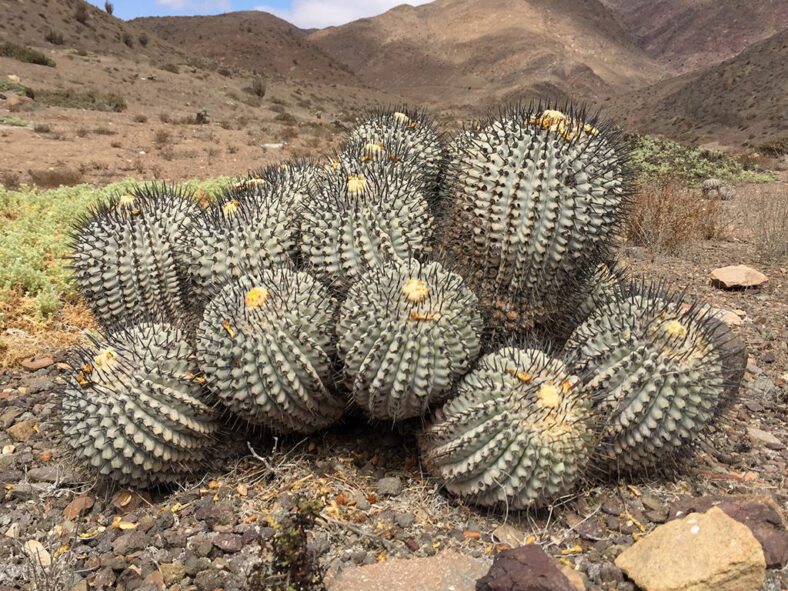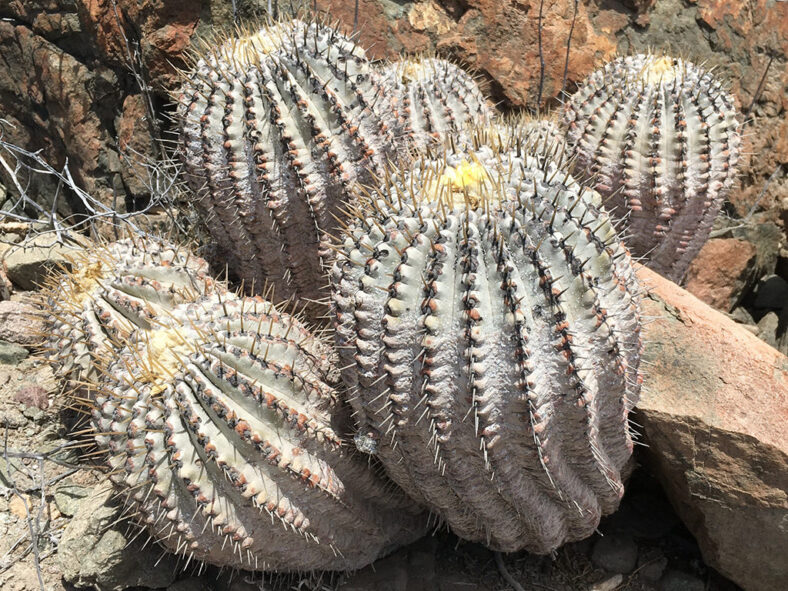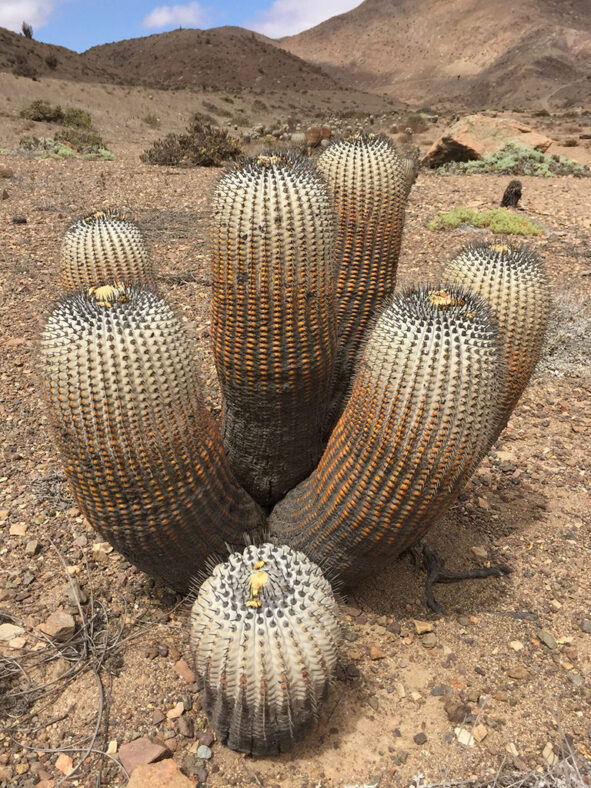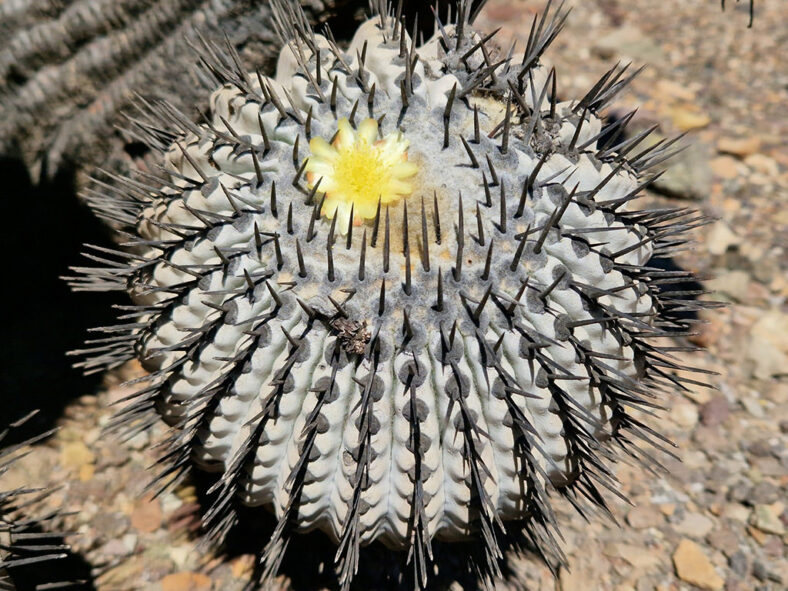Copiapoa cinerea originates from a very arid area where dense fogs occur due to the cold currents of the Pacific Ocean. The light coloration of its stems protects against desiccation in its natural habitat. However, when cultivated, the plant often lacks the white, waxy coating that usually covers its surface. As a result, the brownish epidermis beneath may become exposed.
Scientific Name
Copiapoa cinerea (Phil.) Britton & Rose
Synonym(s)
Copiapoa cinerea subsp. cinerea, Echinocactus cinereus
Scientific Classification
Family: Cactaceae
Subfamily: Cactoideae
Tribe: Notocacteae
Genus: Copiapoa
Etymology
The specific epithet "cinerea" (pronounced "sin-EER-ee-uh") means "ashen, like ashes" and refers to the color of the stem of this species.
Origin
Copiapoa cinerea is native to Chile. Copiapoa cinerea subsp. cinerea occurs in coastal zones of the Antofagasta and Atacama Regions.
Description
Copiapoa cinerea is a small cactus with chalky white stems that have 12 to 30 broad ribs lined with black or dark brown spines. This cactus grows slowly, and only mature specimens will produce offsets from the base. The cylindrical stems can reach heights of up to 4 feet (1.2 m) and have a diameter of up to 8 inches (20 cm). The tips of the stems are covered with wool, and each areole typically has 1 to 2 central spines and up to 7 radial spines.
During the summer, Copiapoa cinerea produces yellow, funnel-shaped flowers atop the stems. Occasionally, the flowers may display pink or red hues and can reach a diameter of 1 inch (2.5 cm). It usually takes 6 to 10 years for this cactus to begin blooming. However, once it starts, it typically flowers every year. The fruits develop between the wool and are only visible once the ripening begins. They can grow up to 0.8 inches (2 cm) long and contain shiny black seeds.

How to Grow and Care for Copiapoa cinerea
Light: Copiapoa cinerea thrives in full sun or partial shade. However, when grown in full sun, it should be protected from excessive sunlight during the summer.
Soil: Use commercial cactus soil mix or create your own to ensure good root aeration and drainage. If the soil is too rich, this cactus may become elongated.
Temperature: Copiapoa cinerea is heat-tolerant but not frost-tolerant. In winter, it must be kept at temperatures of about 50°F (10°C). It grows best in USDA Plant Hardiness Zones 10a to 11b, with average minimum winter temperatures ranging from 30 to 50 °F (-1.1 to 10 °C).
Watering: This cactus requires light and regular watering from spring to fall. Allow the soil to dry out completely before watering again. Never let the pot sit in standing water, and stop watering during the winter when the plant goes dormant.
Fertilizing: Copiapoa cinerea benefits from fertilizing during the growing season. Use a water-soluble fertilizer designed for cacti, and stop feeding during winter.
Repotting: Repot this cactus into a slightly larger pot with drainage holes every two or three years, preferably in late winter or early spring. However, repotting can be done at any time of the year if needed.
Propagation: Copiapoa cinerea can easily be propagated from seeds or offsets when available. The best time to remove offsets is during spring and summer. For the best results, sow seeds in late spring or summer. This cactus can also be propagated by grafting onto a sturdy rootstock, such as Selenicereus species, which is often used to speed up growth.
Learn more at How to Grow and Care for Copiapoa.
Toxicity of Copiapoa cinerea
Copiapoa cinerea is non-toxic but has sharp spines, so keep it away from children and pets.
Links
- Back to genus Copiapoa
- Succupedia: Browse succulents by Scientific Name, Common Name, Genus, Family, USDA Hardiness Zone, Origin, or cacti by Genus
Photo Gallery
Click on a photo to see a larger version.


